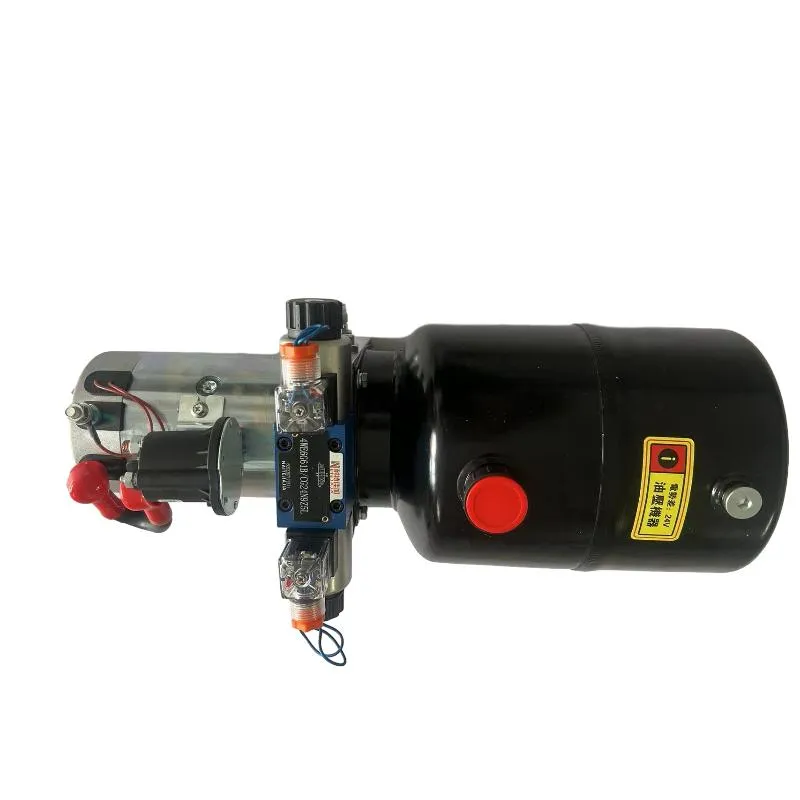Oct . 21, 2024 12:48 Back to list
hydraulic cylinder relief valve product
Understanding Hydraulic Cylinder Relief Valves Key Components in Fluid Power Systems
Hydraulic systems are widely used across various industries, including manufacturing, construction, and automotive, due to their efficiency in transmitting power through pressurized fluid. A crucial component in these systems is the hydraulic cylinder relief valve. This article aims to delve into the function, importance, and types of relief valves used in hydraulic cylinders.
What is a Hydraulic Cylinder Relief Valve?
A hydraulic cylinder relief valve is a safety device designed to control the maximum pressure within a hydraulic system. When hydraulic fluid is pressurized beyond the predetermined limit, the relief valve opens, allowing excess fluid to escape back to the reservoir. This prevents potential damage to the hydraulic components, ensuring the system operates safely and efficiently.
The Importance of Relief Valves
The primary purpose of a relief valve is to protect hydraulic components from overpressure conditions that can lead to mechanical failure. Overpressure can result from system malfunctions, such as blocked lines or malfunctioning cylinders, and if left unchecked, can cause serious damage or even catastrophic failures. By releasing excess pressure, relief valves play a critical role in enhancing the longevity and reliability of hydraulic systems.
Moreover, relief valves help maintain consistent pressure levels, which is essential for the proper functioning of hydraulic machinery. Consistent pressure ensures that hydraulic actuators, such as cylinders and motors, perform optimally, providing smooth and precise control over movements.
Types of Hydraulic Cylinder Relief Valves
hydraulic cylinder relief valve product

There are several types of hydraulic relief valves, including
1. Direct-acting Relief Valves These valves open in response to an increase in pressure. They have a spring-loaded design and are often used in low-pressure applications due to their simplicity and quick response time.
2. Pilot-operated Relief Valves These valves utilize hydraulic pressure to amplify the opening force, making them suitable for high-pressure applications. They remain closed under normal operating conditions and only open when pressure exceeds the set limit. Pilot-operated valves provide better pressure control and stability.
3. Adjustable Relief Valves Many relief valves feature an adjustable mechanism, allowing users to set the desired pressure limit easily. This adaptability is crucial for applications that require varying pressure levels for different tasks.
4. Non-adjustable Relief Valves These valves come pre-set to a specific pressure limit, making them ideal for applications where the system's pressure requirements do not change. Though less flexible, they are often more reliable due to fewer moving parts.
Conclusion
In summary, hydraulic cylinder relief valves are vital components that ensure the safe and efficient operation of hydraulic systems. By preventing overpressure conditions, these valves protect equipment and enhance system performance. Various types of relief valves cater to different operational requirements, underscoring the importance of selecting the right valve for specific applications. Understanding the function and significance of relief valves is crucial for anyone involved in the design, maintenance, or operation of hydraulic systems, as these little devices play a big role in ensuring safety and efficiency in fluid power applications.
-
Fork Lift Power Units - Hebei Shenghan | Efficiency, Reliability
NewsJul.13,2025
-
1.5-Ton Turbocharged Cylinder-Hebei Shenghan|Hydraulic Solution,Energy Efficiency
NewsJul.13,2025
-
Auto Hoist Power Units-Hebei Shenghan|Efficiency&Industrial Lifting
NewsJul.13,2025
-
Double Acting Power Units-Hebei Shenghan|Hydraulic Solutions,Industrial Efficiency
NewsJul.13,2025
-
1.5 Ton Lifting Cylinder 70/82-40-290-535 - High-Performance Hydraulic Solution | Hebei Shenghan
NewsJul.13,2025
-
Fork Lift Power Units - Hebei Shenghan | Efficiency&Reliability
NewsJul.13,2025
